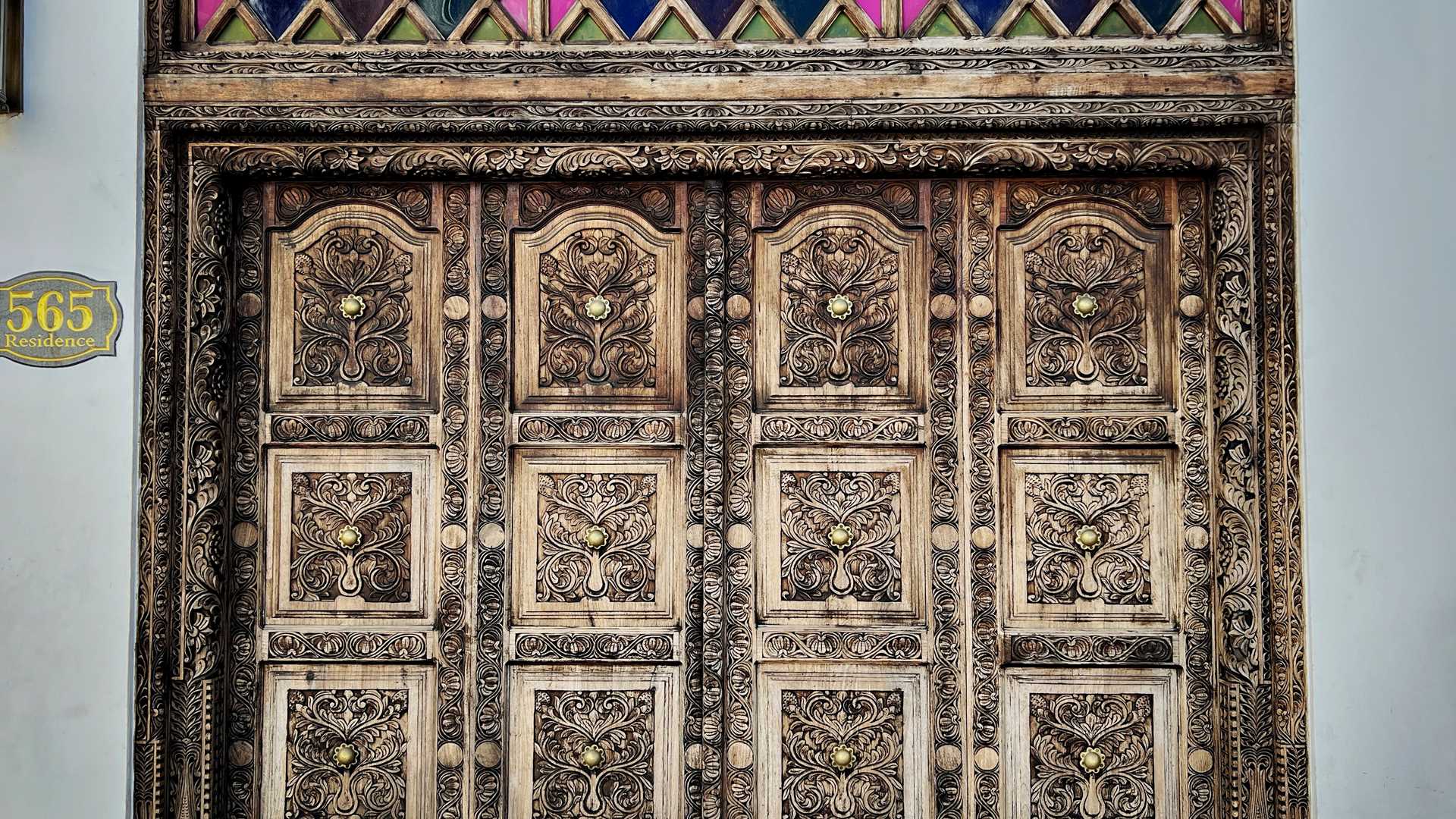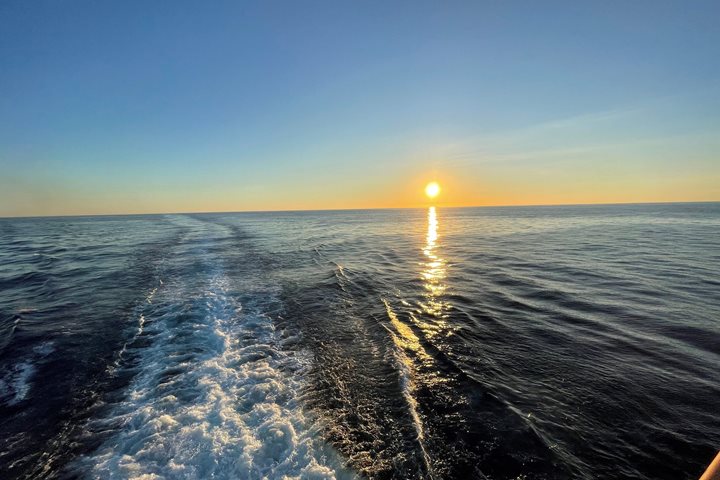We arrived in Zanzibar this morning after two days at sea following our visit to Madagascar. Zanzibar has a well-deserved reputation as a fascinating destination thanks to its rich and complex history, its diverse and compelling culture, and its legacy as a source for many of the spices and tropical plants we use every day in our cuisine and in our beauty products. It was an extra special day to visit this predominantly Muslim country-within-a-country (Zanzibar is part of Tanzania, but it maintains its own government) because it was the last day of Ramadan, and the city was buzzing with Eid al-Fitr energy.
A variety of excursions were offered today, and I took part in a walking tour of the old city in the morning and a drive out to a spice farm in the afternoon. The morning tour offered an opportunity to wander through the narrow and bustling streets of this ancient city. Zanzibar is known for its ornately carved wooden doors, and we saw plenty of impressive examples. We also passed by the ruins of a massive fortress, the former home of pop star Freddie Mercury, a colorful food bazaar, and the site of the old slave market (the slave trade was a large part of Zanzibar’s economy into the 20th century).
In the afternoon, we drove about 45 minutes outside the city center to a spice farm. We got to see what spices (such as nutmeg, clove, cinnamon, turmeric, and pepper) look and taste like before they are harvested and end up on our store shelves and dinner tables. Along the way, we stopped at a few ruins from the time of the Sultanate in the 19th century.
Our journey to Zanzibar, and indeed our journey up the East Coast of Africa, ended with a special after-dinner performance in the lounge. Founded in 1958, the Culture Musical Club is Zanzibar's most prolific and successful taarab orchestra. They have released hundreds of songs on the local market, and since 1988 have had six international CD releases, including one with blues musician Taj Mahal. The group has been performing in Europe regularly since 1996, and in the past few years they have done shows in the US, Dominican Republic, Reunion, and Japan. Fourteen musicians filled National Geographic Explorer’s lounge with lively music that is derived from Egyptian classical music traditions from the Ottoman era, mixed with East African rhythms and dance moves. It was a magical end to a magnificent voyage.






